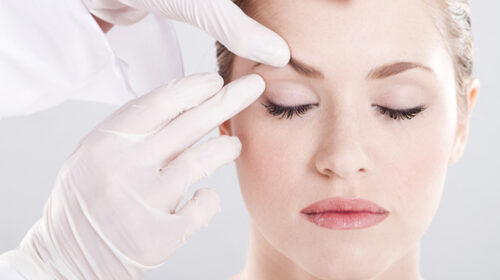The appearance of a scar is greatly affected by the type of wound or incision, how well it heals, and also the forces placed upon it while it is forming.
Scars are the unavoidable marks left behind following cosmetic surgeries. But are there practices your plastic surgeon and you can take to minimize cosmetic surgery scars?
Read on to learn more about the best practices to prevent and heal cosmetic surgery scars recommended by experts.
Maintain sterile conditions during surgery
Dr. Slack, Board Certified by the American Board of Plastic Surgery, indicated that plastic surgeons, especially those that specialize in facial plastic surgery, have developed clever ways to reduce the appearance of scars, hiding them in the natural folds and hairlines of the body whenever possible. They take great care to maintain sterile conditions during surgery to prevent infection. Infections not only impact the patient’s health, they can also result in an ugly scar. In some cases, a surgeon will also administer steroids to decrease inflammation.
Suitable wound closing methods
According to a 2016 study (PubMed), one of the best techniques to close wound is called wound edge eversion–here the surgeon makes sure that the edges of the skin are slightly raised when sutured together. This leads to a flatter scar because wounds have a natural tendency to pull inward as they heal.
Another important factor in optimal scar formation, according to Dr.Slack, is a highly secure incision site. To help with this, surgeons will often use multiple layers of stitches and even strips of tape to reinforce the incision.
Stop smoking
Dr. Maryam Zamani, a highly respected oculoplastic surgeon and leading Facial Aesthetics doctor in the UK, says: “It is always advised that people stop smoking completely before a surgery. Smoking can hamper recovery by reducing the amount of oxygen in the blood and constricting blood vessels. Healing requires a good supply of oxygenated blood. Smoking can reduce the rate of healing, thus decrease proper wound healing.”
Studies (PubMed) have suggested that wound dehiscence is more likely in smokers.
Avoid exposing your scars to sunlight
Scar tissue is incredibly sensitive and can be adversely affected by UV radiation. Minimising the risk of pigmenting a scar is imperative. Avoidance of immediate sun and thorough protection with a high SPF is important to minimize the risk of hyperpigmented scars.
“The best thing to do is to cover your scars in light clothing and to cover it in suncream with a very high SPF.”, says Dr.Zamani.
Don’t exercise straight away
It might be tempting to throw yourself into exercise following surgery, but care should be taken.
Dr. Zamani says: “It takes time for a wound to heal and throwing yourself into rigorous exercise shortly after surgery can cause your body much more harm than good. Take time to let your body and skin rest. Your consultant will let you know when is safe to resume exercise, and the kind of workout that is suitable depending on your operation.”
Pay attention to your diet
Some foods have been proven to help the skin heal more quickly. They include green, leafy vegetables and foods rich vitamins and minerals.
Dr. Zamani says: “Diet can have a real impact on how well you heal, so pay close attention to what you’re eating and drinking. Maintaining hydration after surgery is important as is eating a well balanced diet, as it is in routine life as well .”
Look after your wound
Look after your scar, and the scar will look after itself.
Dr. Zamani, an associate member of the British College of Aesthetic Medicine and the Royal College of Ophthalmology, says: “Follow the advice given with regard to keeping your wound and stitches clean.
“Then be careful not to pick, scratch, or aggressively clean the wound. Healing scars can be itchy. Instead of itching, use cool ice packs to give relief. Wear loose clothes and avoid anything that might rub or irritate them.”
Try a silicone gel
Silicone gel technology is a clinically-proven treatment option for reducing the abnormal scars with over 30 years of evidence to support its effectiveness.
Dr Zamani says: “Once the wound is healed I always recommend gently massaging the skin to keep it moisturised and supple. There are a number of silicone products on the market which can help with this.
“I find traditional silicone sheets can be tricky to apply and are difficult to wear under clothing, so I always recommend patients look for a silicone-based gel instead.
“Nourisil™ MD contains five silicones plus vitamin E, which creates a water barrier over the skin to trap in moisture. It can be massaged into the skin once it has fully healed, so around five to six weeks after surgery, and helps to flatten raised skin, and fade the scar’s appearance.”

